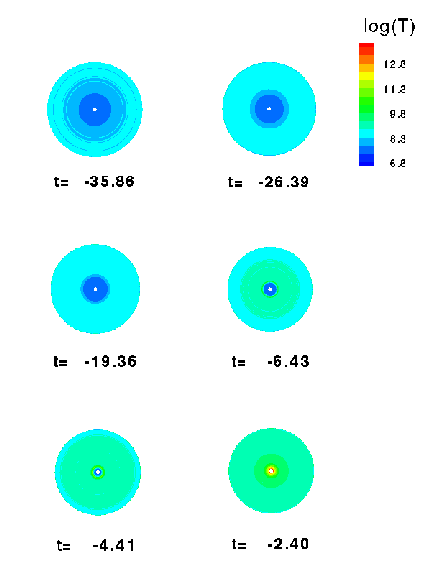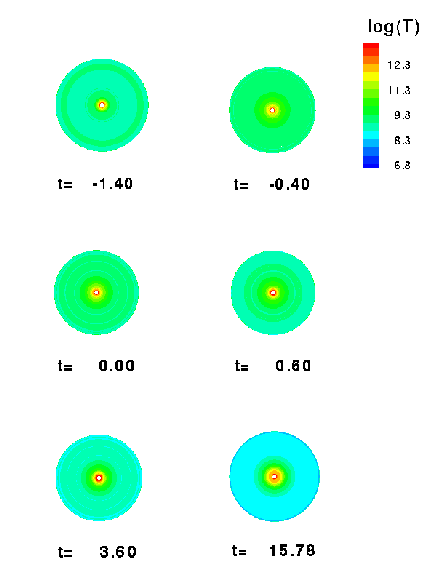- PDF (complete version)
The temperature profiles in the bubble, about the time when it radiates sonoluminescent pulse are given bellow. Time in in picoseconds; zero of time is chosen as the time when bubble radius reaches its minimum value. Bubble radius almost does not change during this short time. At t=-35 ps (profile 1), shock wave just started to form - note lower temperature in the bubble center. The shock implodes towards the center and reaches it at t=-2.4 ps (profiles 1-6). It rebounds, producing high temperature (measured in hundreds of thousands, if not millions of degrees) at the bubble center.
Profiles 7-12 show the rebounded shock wave which propagates outwards, hits the bubble wall (t= -0.4 ps), partially rebounds again, collapses towards the center (t=0.5 ps), and rebounds again. A lot of action during the time which is million times shorter than period of bubble oscillations. And bubble oscillates 26,000 times in one second!


Still, many questions remain unanswered. One of them is that a small change in the bubble content (e.g. change of the amount of noble gas) leads to drastic changes in the SL emission. Experimental results suggest that the stability of the bubble oscillations with respect to the small disturbances of its (presumably) spherical shape might be responsible for this observation. This part of our research is summarized in
- L. Kondic and Joel I. Gersten, Stability of the Sonoluminescing Bubbles (1995).
Some insight into the above mentioned questions can be reached by modifying another available experimental parameter, and that is ambient pressure. Previously developed shock theory of SBSL, combined with the study of bubble stability and mass transfer between the bubble and the surrounding liquid predict some intriguing results. In particular, the theory predicts a 200% increase in SL radiation if ambient pressure is decreased only 5%. Preliminary comparison with available experimental results encourages further research in this direction.
- L. Kondic, Chi Yuan and C.K. Chan, Ambient pressure and single-bubble sonoluminescence , Physical Review E 57, 32 (1998).
We continue our research in the field of sonoluminescence, and hope to contribute to the better understanding of the physical and chemical processes relevant to this fascinating effect.
Return to Lou's Homepage